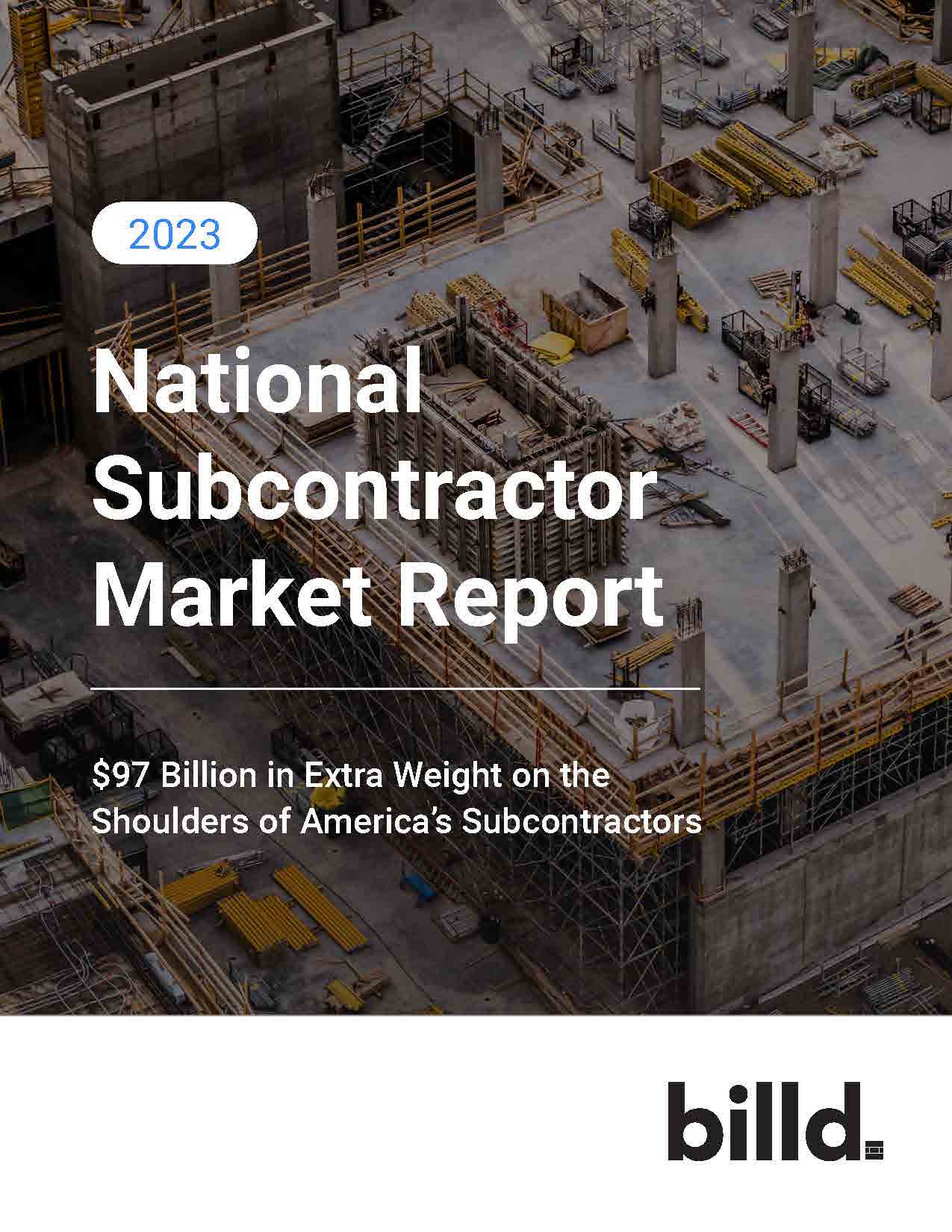A survey of nearly 900 commercial construction professionals concludes that subcontractors continued to bear the brunt of rising input costs for materials and labor in 2022—to the tune of $97 billion in unplanned expenses. Summarizing survey findings in the 2023 National Subcontractor Market Report, Austin, Texas material and labor financing solutions provider Billd notes that rising costs and price volatility are not new challenges for its clients.
More than half of survey respondents cite as their primary trade concrete, electrical, finishes, HVAC or thermal and moisture protection. Among all respondents, 81 percent confirm the negative effect of rising costs on their businesses, while 80 percent expect 2022 trends to continue this year. They also note overall material and labor costs climbing 26 percent and 15 percent year over year, respectively. While some subcontractors increased their bids to offset rapidly rising costs, one-third of respondents were unable to raise those bids commensurate with their expenses. Consequently, 57 percent of businesses informing survey results reported a decrease in profitability for 2022, despite 61 percent realizing revenue growth.
“Subcontractors are the foundation of the construction industry, providing all material and labor to complete a project,” says Billd CEO Chris Doyle. “They purchase material and pay for labor upfront, [yet are] not being paid for their work for 74 days—a result of the dysfunctional payment cycle. If you add unplanned expenses due to rising costs in material and labor, it puts an unrealistic burden on subcontractors. Despite these compounding challenges, they remain optimistic about their businesses. This report highlights the entrepreneurial spirit subcontractors continue to exhibit each and every year.”

Report authors examine how macroeconomic conditions impacted subcontractors in 2022, as well as their outlook for 2023. They also provide perspective on new financing options subcontractors can leverage as mainstays, like supplier terms, become less reliable. Where supplier terms are concerned, 72 percent of survey respondents note having 30 days or less. Considering the 74-day average wait time for payment, report authors note, it is no surprise that 51 percent of respondents deem supplier term periods insufficient. Supplier terms, nevertheless, are the primary means of buying materials for 87 percent of subcontractors responding to the Billd survey.
“Subcontractors are resilient and optimistic but need more tools to navigate this increasingly challenging environment,” Doyle contends. “The payments supply chain in construction is terribly broken, leaving subcontractors to finance a $1.8 trillion industry with very few cash flow solutions. Billd stands as the company championing the subcontractor, helping them get the financial support they need to do the best work of their lives.”